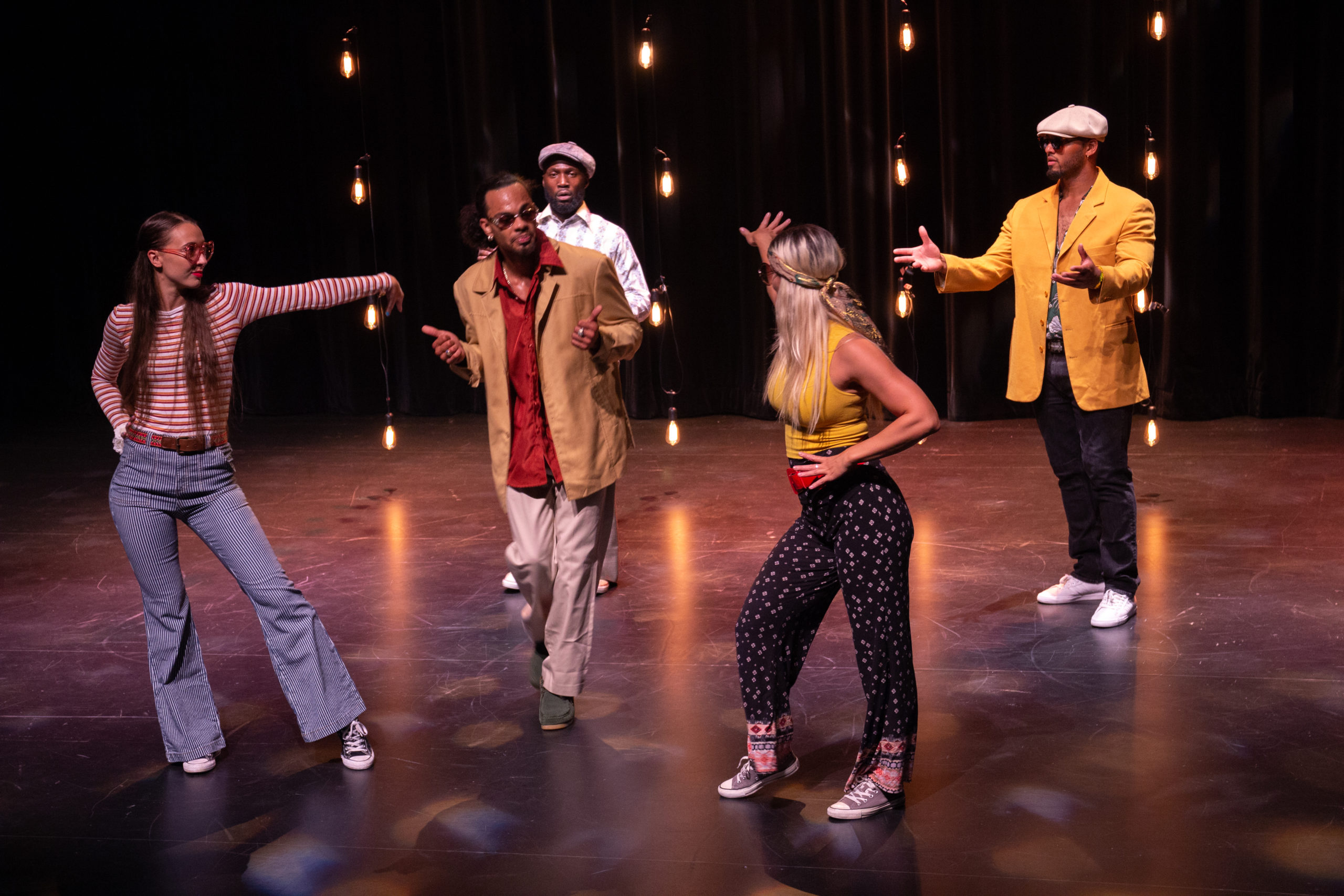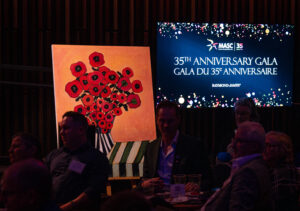Interview: Crazy Smooth dances to express, not to impress
By Jessica Ruano | January 6, 2022

This interview was originally published on Apt613.ca
Yvon Soglo (B-boy Crazy Smooth, founder of the Bboyizm Dance Company) has been dancing for over 10 years, during which time he has become known as one of Canada’s top street dancers. His professional experience includes teaching Cirque du Soleil acrobats and performing at the Nancy Jazz Pulsations festival in France. Yvon dedicates himself to carrying on street dance culture in the world of performing arts with the motto “Dance to Express, Not to Impress.” Here, Yvon talks about vulnerability in hip hop culture and staying rooted to his community.

Bboyizm Dance Company. Photo provided by MASC.
MASC: Congratulations on receiving the 2020 Clifford E. Lee award from the Banff Centre for Arts and Creativity for your dance work IN THE BODY. This piece addresses aging in the street dance community, and you have said, “They say that the most courageous thing a dancer can do is to grow older – for a b-boy/b-girl, experience approaches heroism.” Why do you feel that’s important to communicate?
In high school, I was listening to rappers who are now in their fifties, and most of them still rap about the same things. There’s no talking about, oh yeah, I went through a hard time, I went through depression… There’s a bravado that exists in our art form. Vulnerability is not normally celebrated; it’s considered taboo. But I think there’s something beautiful about opening up in that way.
I try to write about the reality that I am living right now. I look to my left and I see my youth, and I look to my right and I see where I’m going. I can still do the same things that I did when I was younger, but the consequences are different. I just turned 40 and I’ve had many injuries and four knee surgeries.

Bboyizm at Awesome Arts Festival. Photo provided by MASC.
Over the years, I’ve been asking questions to young dancers and the OGs, and I’ll be doing more formal interviews as I continue to work on this project. These elders are the gatekeepers to this knowledge. Some of the older dancers I’ve talked to say they’re dancing better now with fewer of the capabilities they had when they were younger. They have fewer inhibitions. When you’re pressured by other people’s perspectives, it affects you; when you’re older, there’s no longer that pressure. You develop more precision, more substance through your limitations.
Your piece incorporates both words and movement to communicate ideas. How does verbal language contribute to the visual language of dance? What is the process for working with one art form alongside another?
We’re putting together a threesome of dance, spoken word, and multimedia. Dance goes places that words cannot. Words can go places that dance cannot. Same with multimedia. We’re using each of these mediums’ strengths to elevate the others.
We’re trying to create the perfect balance and combination of these art forms to tell the stories and execute this show. Will the dancers be speaking onstage? Will there be voiceovers? Will words appear in projections? Will we see the insides of dancers’ bodies? We haven’t yet determined many of these things. That’s why we’re in a creation process to help me go to the extent of the vision that I have for this piece.

Bboyizm dance workshop. Photo provided by MASC.
As a member of MASC, what do you gain through offering your workshops in schools and in the community?
MASC makes sure I stay connected to where I come from. I don’t think I would be where I am today without that. We’ve never been artists that get to a certain point where they’re too far to engage with the community. We’ve been touring since 2010, and we’re still going to the same community centres.
Many of the staff at MASC are artists themselves and they care about seeing the community thrive and grow, and they care just as much about the artists. For me it’s an honour to be a MASC artist because they’re so well-respected in the community. Since Bboyizm has become more and more successful, I make a point of keeping that relationship with MASC because they keep me rooted.

Bboyizm with students. Photo provided by MASC.
Why do you think it’s important for our local community to have access to professional artists?
They seek out good artists and bring them into schools. We can’t quantify the impact we have on the kids, but I know that I have boxes of letters from kids from these workshops. And I’ve had kids tell me how much we influenced them years ago. It kinda makes me feel old!
There are many barriers to attending shows, so MASC often brings students their first exposure to live performance. These kids are going to grow up and have their own kids and continue the consumption of live arts. Performing arts venues and organizations are constantly asking, how do we attract new audiences? Look to MASC! They are contributing directly to the ecology of local arts.

Bboyizm at Arts Court. Photo provided by MASC.
Many people have seen and enjoyed street dance, but know very little about the history and cultural context of this art form. What do you want people to know about the culture behind the dance?
Our MASC program “The Evolution of B-boying” is a history lesson about hip hop culture disguised as entertainment. There’s so much history from the African-American community, the Latin American community, from the 1970s and ’80s up until now. There was a specific social, economic condition that existed in the ghettos in the south Bronx that, out of love and beauty, spawned this art form that then travelled all over the world. There’s a history behind it, and it varies from region to region. It has impacted and influenced traditional and contemporary dance. There are talks about having it as a discipline in the Olympics. It’s a serious art form.
In 2007-08 I was at a jam called Circle Kings in Switzerland, and I was looking at everyone in the jam: Israeli B-boys, Korean B-boys, people of all races, religions, backgrounds. And everyone existed there in peace for the art form. For that moment, all the other things didn’t matter. We’re all human beings sharing this moment together.
Latest News
View All Articles



